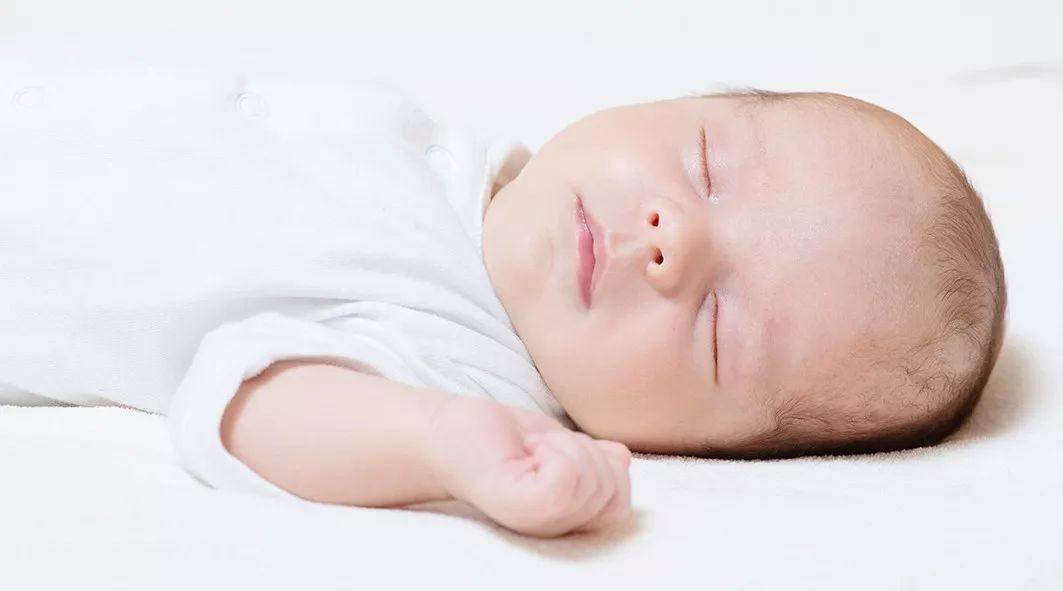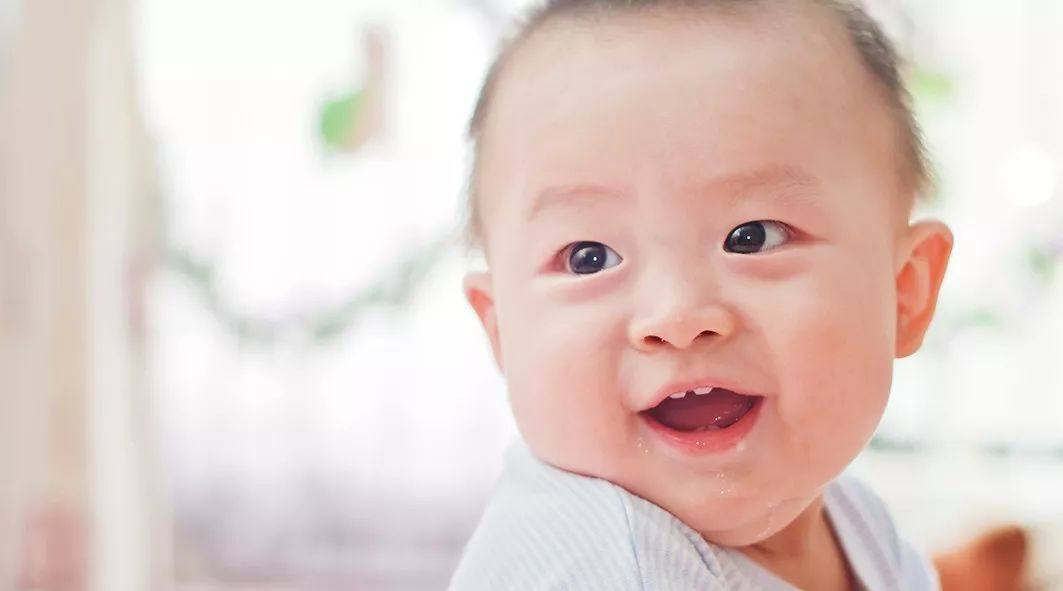
Regarding calcium deficiency, everyone has many questions:
[Children sweat a lot at night. The old man said it was calcium deficiency. Is it true? ]
[People in the mother and infant store said that my baby walked late, grew short, and was calcium deficient…]
[The aunt next door said that the child’s hair is short of calcium. Do you really need to make up for it? ]
…….
When it comes to various nutritional elements of Chinese children, calcium is probably the most humbled one.
It seems that everything can be related to calcium deficiency. Novice parents are already a little anxious, and all kinds of [kind voices] around here have not stopped.
So, are these [strange] babies really calcium deficiency? Do babies really need calcium supplements?
None of these 10 symptoms is calcium deficiency.

1. Occipital baldness
There are two main reasons for pillow baldness. A baby lies in bed for a long time, and the scalp rubs against the pillow, causing the hair to be worn off. In addition, it is also related to the hair growth cycle of the newborn.
Pillow baldness is only a normal periodic phenomenon for the baby, and the hair will grow again when the child is older, which has little to do with calcium deficiency.
2. Slight valgus of ribs
The diaphragm of infants is not fully developed and always looks bulging. It will pull the ribs inward, causing the ribs to turn slightly everted.
Compared with fat babies, thinner babies have more obvious valgus ribs. This kind of performance will gradually ease when the baby is 2 ~ 3 years old without calcium supplement.
3. Walking unsteadily and wrestling easily
It is normal to walk unsteadily and fall easily. However, no one can walk like a fly as soon as he learns to walk. It is a process and has nothing to do with calcium deficiency. If the child has no other abnormalities, it is good to wait patiently.

4. Late closure of halogen gate
The baby’s anterior fontanelle will close in about 9-20 months, the posterior fontanelle will generally close in about 3 months, and some infants will not close until they are 2 years old. There is no calcium deficiency in what.
5. Children’s O-leg and X-leg
When the baby is just born, due to the long-term [shape] of the legs coiled in the mother’s belly, it will have a little O-shaped legs and will straighten itself around the age of 2. Then, due to the reasons of growth and development, they began to have a little X-shaped legs, and when they were about 7 years old, they would straighten again.
6. Sleep at night and sweat a lot.
For children under 8 years old, especially those under 3 years old, sweating often occurs in the first few hours after sleep, which may be related to the vigorous metabolism and imperfect nervous system development of the baby.
With the growth of age and perfect development, the situation of excessive sweat will gradually improve and disappear.

7. Night is noisy and easy to wake up.
Babies wake up easily when sleeping because there are many factors that affect their sleep.
For example, children often fall asleep while eating milk, or adults hold and coax them to fall asleep for a long time and then put them on the bed, causing children to form bad habits.
Parents should find solutions according to the reasons and do not rush to intervene. It is even more useless to supplement calcium.
8. Molars
For children, During the teething phase (including the eruption of deciduous and permanent teeth), It is the peak period of molars at night. In addition, genetic factors, psychological factors, excessive daytime exercise and other reasons will also lead to children’s molars. For preschool children, there is generally no special intervention, molars will disappear with age, but if there is discomfort or pain, you need to take your child to the dentist.
9. Short stature
Children’s shorter growth than their peers has a lot to do with genetic genes. In addition, whether feeding is reasonable or not will also affect children’s growth and development. Blind calcium supplement cannot make children grow taller quickly.
10. White spots on your nails
The small white spots on the baby’s fingernails are mostly caused by the baby’s own active injuries.
Nails exposed for a long time will easily be squeezed and collided, and small white spots will appear.
Generally speaking, the small white dots will slowly move to the fingertip with the growth of the fingernails and just trim them off.
Generally speaking, as long as children have balanced nutrition, they will basically not suffer from calcium deficiency, and the more direct reason for the part of calcium deficiency commonly referred to by people is actually the lack of vitamin D, which can promote calcium absorption.
Seeing this, some parents will say, [I know all this, but my baby has had bone mineral density and blood calcium tests in the hospital, and the results show that it is calcium deficiency. Can I not supplement it? ]
Our answer is still: no supplement!
Why do you say that? Let’s talk about it in detail next.
Neither bone mineral density nor blood calcium test results can indicate calcium deficiency in children.
1. Low bone mineral density is calcium deficiency?
Not reliable!
At present, there will always be an examination called [bone mineral density test] in the family barrel of children’s physical examination.
Don’t believe it, most of the baby’s measured results are low bone mineral density, a look is to supplement calcium.

In fact, the real situation is: due to various interference factors, it is not technically possible to determine the proprietary standard for judging children’s bone mineral density at present, and the adult standard has been used clinically to judge children’s bone mineral density.
The bone mineral density of children itself is lower than that of adults, and the bone mineral density standard of adults has been used to measure children in the period of rapid growth and development. Can the measured bone mineral density not be low?

For bone mineral density tests that do not even have standards, what should be used to believe the results of calcium deficiency.
2. Can blood calcium test judge the baby’s calcium deficiency?
Not reliable!
99% of human calcium is in bones and teeth, and only 1% of calcium is free in tissue fluid and blood.
When the calcium content in the blood is insufficient, regulated by hormones such as growth hormone and calcitonin, a certain amount of calcium will be automatically freed from the bone to supplement the calcium in the serum.
It can be understood as follows: even if people are already short of calcium, the calcium content in blood will not change what.
It is absurd to judge whether a child lacks calcium by the calcium content in his blood.
It is really difficult for babies to lack calcium.
How can calcium deficiency be considered? In a word, as long as children drink milk and eat normally, it is difficult to lack calcium.
< < Reference Intake of Dietary Nutrients for Chinese Residents (2013 Edition) > > The recommended calcium intake for children of different ages is distinguished as follows:
- For babies aged 0 ~ 6 months, it is suitable to take 200 milligrams of calcium every day. For babies aged 7-12 months, 250 milligrams of calcium should be taken every day. For babies aged 1-3 years old, 600 milligrams of calcium are recommended every day.

For babies within 6 months old, the daily food is mainly breast milk or formula milk.
Generally speaking, the calcium in breast milk is enough to meet the needs of children (about 200 milligrams of calcium are contained in every 600 mL of breast milk).
Babies who drink formula milk are more convenient for their mothers to control the amount of milk according to the calcium content in milk powder, not to mention worrying about calcium deficiency.
Six months later, the baby began to add supplementary foods, and the sources of calcium intake also increased. Green leafy vegetables and beans are rich in calcium.
Children do not have other sources of calcium intake, and it is unlikely that they will lack calcium if they guarantee 600 ~ 800 mL of milk every day.
After the age of 1, the sources of calcium intake for babies are more diverse. Pasteurized original cheese, yogurt or healthy snacks such as dried shrimps and dried bean curd can be used as sources of calcium intake for babies.
At this time, the baby only needs to ensure 400 ~ 500 mL of milk, which is enough to meet the baby’s demand for calcium.
Of course, if it is really impossible to make a balanced diet for children after adding supplementary foods, the milk quantity is sufficient, and proper calcium supplement is also acceptable.
However, the more calcium, the better. Blind calcium supplement will also bring a burden to children’s bodies.
Sufficient milk, balanced diet, daily vitamin D supplement for children to promote calcium absorption, is enough.
